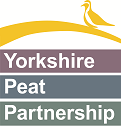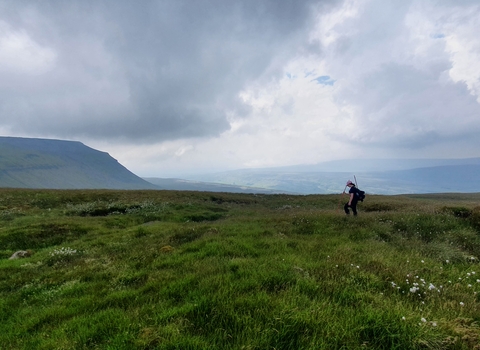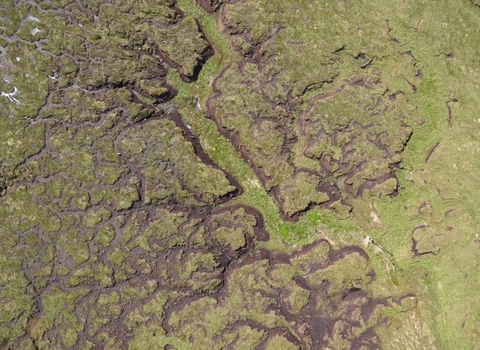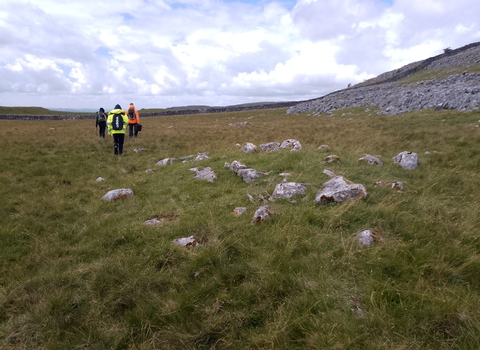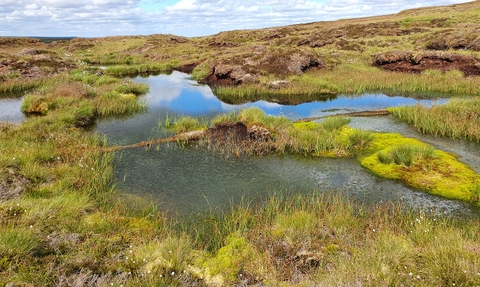
Stake Moss post restoration © Elliott Lorimer
Our restoration
Surveys
There's a lot of hard work before the hard work starts - each site is painstakingly surveyed before we start to plan for restoration...
Techniques
Once we have surveyed a site, we can draft the restoration plan for agreement with the landowner. We'll use different techniques to address different erosions features. All of these are aimed at getting the water table back up towards the surface and keep it on site. Once we have addressed the hydrology, we can re-establish characteristic blanket bog vegetation.
Coir reservoir on Stake Moss © Chris Osborne
Bunding
We use bunding to break up surface flow across areas of bare peat, although it can also be use in gullies with a low flow. This can be in the form of coir logs or turfed over peat; peat bunding is a recent adoption of a lowland restoration technique. By breaking up the flow of surface water, we retain rainfall on the moors and allow vegetation to re-establish on the bare peat.
Block grips on Fleet Moss © Les Hughes
Grip blocking
There are several materials we can use to block these channels and we will always look to use what is readily available on site, so peat dams are a preferred option. A skilled digger driver takes a sod of peat and keys it into the sides of the grip and then uses existing vegetation to put a turf on top to try establish vegetation in the channel.
Dammed gully on Stake Moss © Chris Osborne
Gully blocking
We match our intervention to the gully we are blocking. Where there is peat to key into at the sides and bottom of the gully, we install timber dams. Where the peat at the bottom of the gully has completely eroded down to the mineral soil, we would use stone. If a gully is too wide to dam effectively, we install a series of baffles to slow the flow of water through the feature.
Reprofiling in progress © Tessa Levens
Reprofiling
Steep slopes of bare peat make it impossible for vegetation to re-establish; our contractors lower the angle of the slope to below 30° and turf over the bare peat. Where erosion is so severe there isn’t enough vegetation around to turf the slope, we use heather brash (cut heather stalks with mosses and seed mixed in) to cover the bare areas. We use lime and fertiliser to try kick start plant growth in difficult conditions.
East Gill from the air post restoration © Aaron de Raat
Revegetation
YPP has revegetated 209 ha of bare peat using heather brash, seed and plug plants. The key species we want to get established on Yorkshire’s peatlands are the cottongrasses and sphagnum mosses as these characteristic bog species are key for peat formation. YPP has planted 800,000 cottongrass plugs and over 1.3 million sphagnum moss plugs and this number only continues to rise as we work on more sites.
Progress
We delivered a remarkable 42,868 ha of peatland restoration work by the end of March 2023, which is 45% of the estimated 94,220 ha of peatland in our operational area.
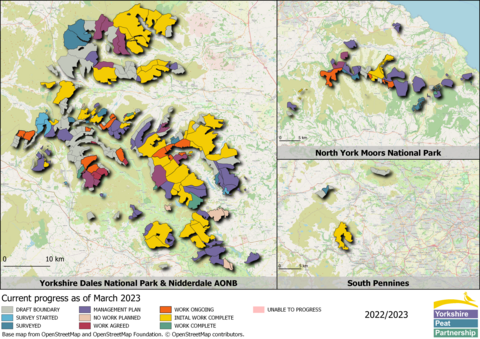
2022/2023 Progress Map
